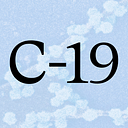The Latest: What was the WHO talking about?
Dear Reader,
On Monday I was really frustrated. An unclear statement from the World Health Organization set off a news cycle suggesting that it’s rare for asymptomatic people to spread Covid-19.
That was… very confusing. As I shared with you last week, studies have repeatedly shown that people without symptoms can spread Covid-19. The WHO has since clarified, and my colleague Dana Smith and I wrote a detailed explainer you can read here. Below are three key takeaways:
✅ People who do not have symptoms can transmit the virus. What’s unclear is how great of a role they play in overall coronavirus spread.
✅ Asymptomatic people who never exhibit signs of Covid-19 are different from presymptomatic people, who initially don’t have symptoms but develop them later.
✅ The real conundrum is presymptomatic transmission, which has been found time and again to be a high risk and is what makes Covid-19 harder to control than other coronavirus diseases like SARS.
Taken together, here’s the deal: People without symptoms can spread the virus. That’s why masks, distancing, and handwashing continue to be important.
What else is new:
- More than a dozen states and Puerto Rico have hit records for new Covid-19 cases: Since the beginning of June, 14 states and Puerto Rico have recorded their highest ever seven-day average of new coronavirus cases. Read more.
- Global coronavirus cases hit a new high: The WHO warned that the pandemic appeared to be worsening as the number of new daily cases worldwide hit a high on Sunday. “Yesterday, more than 136,000 cases were reported — the most in a single day so far,” Dr. Tedros Adhanom Ghebreyesus, the organization’s director-general, said at a briefing on Monday.
- New data confirms aggressive shutdowns were necessary: A study published in the journal Nature finds shutdown orders prevented about 60 million coronavirus infections in the United States. Read more.
- Health officials monitor protests: The U.S. Centers for Disease Control and Prevention (CDC) said Sunday it was closely monitoring the protests throughout the country, warning that such gatherings could increase coronavirus transmission. Earlier this month, CDC Director Dr. Robert Redfield said protesters should be tested for the virus.
Follow our Medium Coronavirus Blog for regular updates, and read some of the essential stories we’ve curated below.
Be well,
Alexandra Sifferlin
Editor, Medium Coronavirus Blog
Was this email forwarded to you by a friend? Sign up to receive regular updates from our Coronavirus Team in your inbox.
Sign up here. 📩
A quick Q&A: Should I isolate after protesting?
“If you were in the middle of a large protest where you couldn’t safely social distance and if you were not able to wear your mask throughout, the safest decision would be quarantining for two weeks. If you were part of a peaceful protest outdoors with social distancing and masks on, the risk is likely much lower.” — Abraar Karan, MD, MPH, an internal medicine doctor at the Brigham and Women’s Hospital and Harvard Medical School
New on the blog
What the WHO Really Meant Regarding Asymptomatic Spread
Blood Type May Play a Role in Covid-19 Susceptibility
Unmasked Police Are a Risk to Protesters — and Each Other
The Covid-19 Threat to Protesters Who Get Arrested and Jailed
Essential explainers
Read This Before You Fly Anywhere
What to Consider Before Having Sex in a Pandemic
5 Rules to Live By During a Pandemic (New York Times)
How to Interpret Covid-19 Test Results
Smart reads
Please Don’t Avoid the Emergency Room
If You’re Scared for Quarantine to End, You’re Not Alone
Why People Turn to Puzzles for Pandemic Stress Relief
How One Brooklyn Hospital Survived Its Deadliest Spring (The Atlantic)

